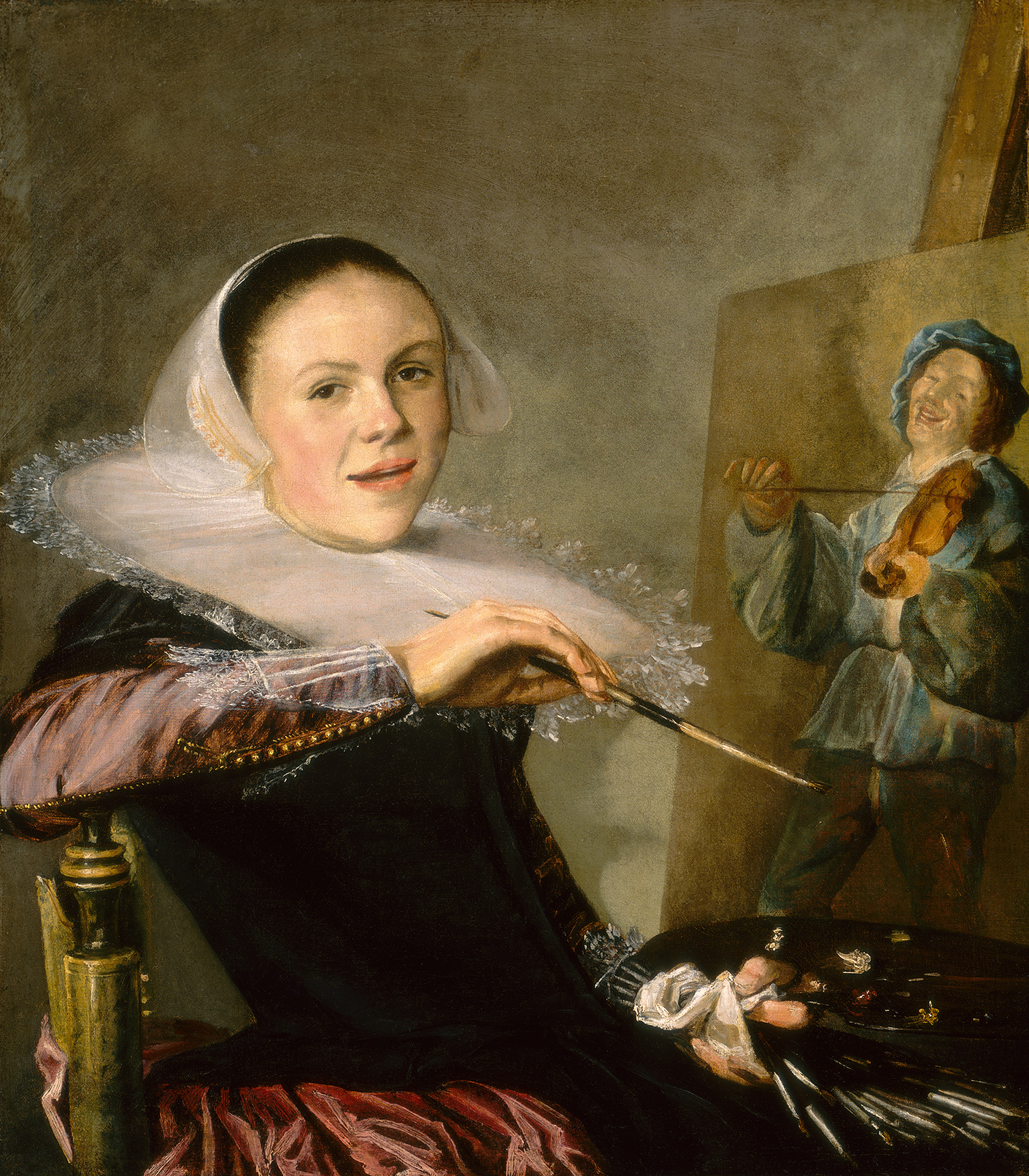

Judith Leyster self-portrait 1630, near
age 21, in National Gallery of Art, USA.
Leyster's dynamic and daring "Self-Portrait" may have been her presentation piece for entrance into the artist's Guild of Saint Luke of Haarlem (see main page) and its apparent informality belies careful calculation. She created a composition that emphasized her talents in two areas: portraiture and genre scenes. She sits as a dignified member of society, in an informal manner, as she turns toward the viewer with her arm over the chair, her warm and open expression revealing happiness.
Leyster represents herself in the fashionable dress of the Dutch middle class. This is hardly the simple smock you expect her to wear in the workshop, but rather it is the dress that signifies her social and economic status.
The fiddler on her easel comes from another of her works, called "Merry Company".(see main page). X-rays have shown that Leyster painted him in over a female figure, possibly herself. "Merry Company" was one of Leyster’s most popular images, frequently copied by her students (she had her own studio, which was exceptional for a woman in those days) and she seems to have used it here as a kind of calling card as she must have decided that this painting could advertise several messages at once: I am a successful, sought-after painter, I can paint great portraits, and I am skilled at painting lively scenes of people.
The informal atmosphere conveyed in her self-portrait was certainly inspired by Frans Hals. Her nonchalant pose and vivacious expression, suggesting Leyster was in a casual mood, all build upon the innovations Hals had introduced to Dutch 17th Century painting.